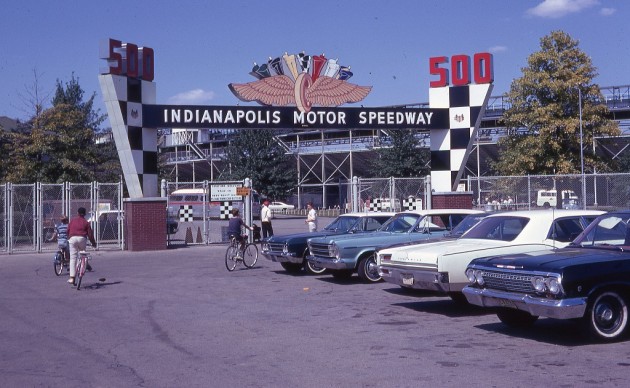
Indianapolis Motor Speedway: 1967 Entrance
Photo: Mark Zimmerman via Flickr/CC
Is there any track in all of North America that carries the same level of prestige and fame as the Indianapolis Motor Speedway? It’s hard to name any that could even compete. Every speedway in the world owes something to it.
When it was built in 1909, the Indianapolis Motor Speedway was the first racing facility to be named as such, the first “speedway” in the world that would spawn hundreds to come. And with a total seating capacity of approximately 400,000, it’s also the highest-capacity sports venue in the world today.
Though the venue was immediately popular in 1909 and though multiple land speed records were broken on the first race weekend, it was marred by accidents, safety hazards, and the death of two spectators and a mechanic in a crash. Races were stopped until the track was rebuilt with bricks, resulting in the “Brickyard” nickname that has persisted for more than a century.
Vehicle Maintenance Info: What is BMW Ultimate Service?
Rough Beginnings to the Indy 500
The first 500-mile race took place in 1911 on Memorial Day, which Ray Harroun won by using the first rear-view mirror on an automobile instead of using a riding mechanic like every other driver. Throughout the next few years, European winners at the Indianapolis Motor Speedway gave the track a worldwide reputation and international appeal.
Indianapolis Motor Speedway: Bump Day 1983
Photo: Barbara Ann Spengler via Flickr/CC
In the 1930s, the rules were changed to what some called the “junkyard formula” to try to get more manufacturers involved in the race by discouraging the entry of specialized racing machines that previously dominated, and in 1933, a record 42 cars started for the Indy 500.
Following numerous fatalities, the track was once again repaved—this time with tarmac—and other safety improvements were made, such as removing the inside wall in the corners and implementing the first yellow light system.
During WWII, the track was more or less abandoned and fell into a state of disrepair, which led some to believe it would become a housing development after the war. Instead, it was purchased by Tony Hulman for an alleged $750,000 and quickly renovated afterward, in time for the 1946 race.
The Indianapolis Motor Speedway continued to draw in more fans throughout the 1950s thanks to the low-slung, sleek cars known as roadsters that ripped through the tarmac at 150 mph. It was so popular that it became part of the official Formula 1 World Championship for 10 years, but this era was also one of the most dangerous in the track’s history and unpopular among the drivers.
Get a Deal: Valuing your current vehicle when trading
Indy’s Rise to Prestige
In the 1960s, the track was finally completely repaved with asphalt except for the three-foot-wide line of bricks at the start-finish line known as the “Yard of Bricks.” Though it no longer hosted a Formula 1 Grand Prix, numerous F1 drivers went back to race there again and started what became known as the “rear-engine revolution” when Jim Clark dominated in the Lotus 38.
At that point, the Indy 500 had achieved a level of prestige matched only by the 24 Hours of Le Mans and the Monaco Grand Prix, known as the “Triple Crown of Motorsport” should any driver win all three. To date, Graham Hill is the only driver ever to have managed it.
In 1975, the Indianapolis Motor Speedway was placed on the National Register of Historic Places, and in 1987 it was designated a National Historic Landmark, making it the only landmark to be associated with automotive racing history.
Though it is best known for hosting the Indianapolis 500, the speedway also hosts NASCAR’s Brickyard 400, hosted the United States Grand Prix from 2000 to 2007, and began hosting the Indianapolis motorcycle Grand Prix in 2008.
Looking forward, it’s hard to imagine any speedway will be able to dethrone Indy as the place where all American and international racers want to win an oval race, regardless of what branch of motorsport they come from.
The News Wheel is a digital auto magazine providing readers with a fresh perspective on the latest car news. We’re located in the heart of America (Dayton, Ohio) and our goal is to deliver an entertaining and informative perspective on what’s trending in the automotive world. See more articles from The News Wheel.